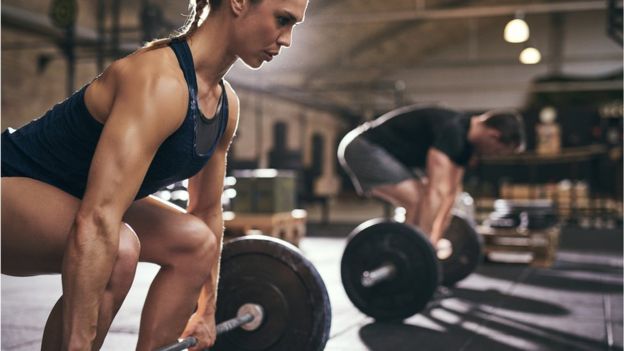The key is to combine strength and endurance training, researchers from Manchester Metropolitan University say.
Cycling, running or swimming is recommended for all-round fitness.
But climbing stairs or doing chores - energetically - also works, as an alternative to the gym, they said.
The research team compared the performance of three different groups of male athletes, who trained at least three times a week in their sport.
There were 87 endurance athletes, such as road cyclists, skiers and distance runners, 77 power athletes, such as sprinters, bodybuilders and throwers, and 64 team athletes involved in football, basketball and volleyball.
All were from the Lithuanian Sports University in Kaunas, Lithuania, and aged 17 to 37.
'Best of both'
The athletes were all tested on muscle power, how high they could jump vertically from a standing position, and their ability to use oxygen during intense exercise - a measure of aerobic endurance.
The researchers discovered that team athletes had a similar aerobic stamina to endurance athletes and a similar jump range to power athletes.
Professor Hans Degens, lead study author and professor of muscle physiology, said: "Our study shows team athletes actually have the best of both and that is a fantastic observation. We did not expect to find that.
"It demonstrates that endurance training for power athletes and power training for endurance athletes is not detrimental."
He said bodybuilders tended to think that any kind of endurance training would result in them losing muscle mass and reducing their performance levels.
But this wasn't the case, he explained.
"In physiological terms, if you are doing any physical activity then you need to employ a certain amount of muscle for a movement.
"But if you can recruit a smaller proportion of that muscle to do exactly the same amount of work then you can delay the onset of fatigue - or you can perform the movement at a higher speed."
Prof Degens said the findings were relevant to anyone taking part in any type of sport or fitness - not just elite athletes.
"If you're a very slender person who is more suited to endurance, or a very stocky person more suited to power, it won't harm to introduce exercises of the other type."
He said they now planned to look at how much combination training was needed to bring up performance levels to that of a specialist endurance or power athlete.
More about: training physical-activity














































